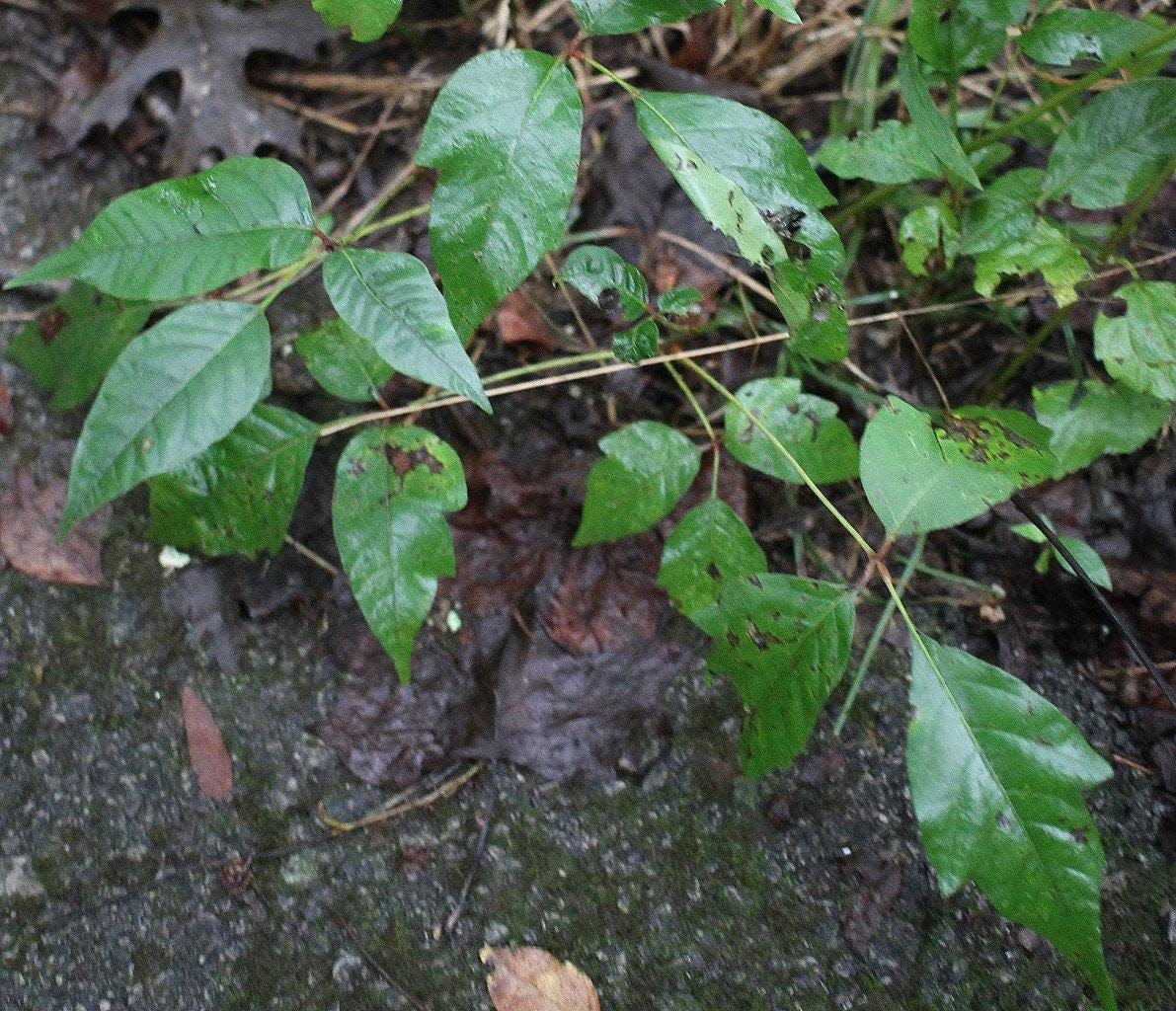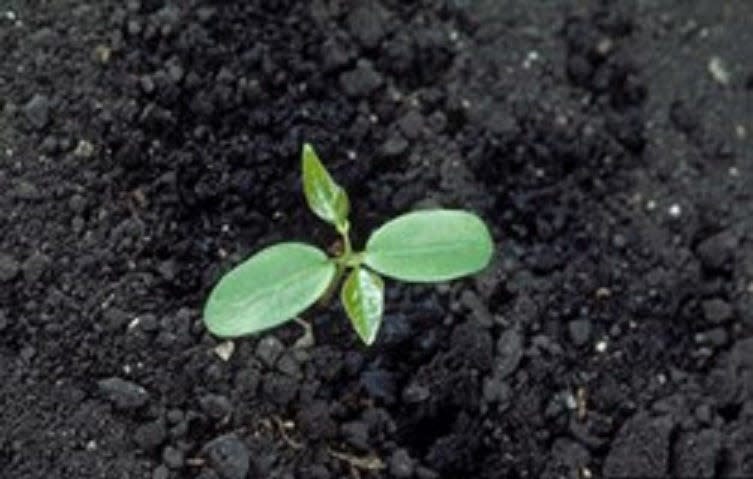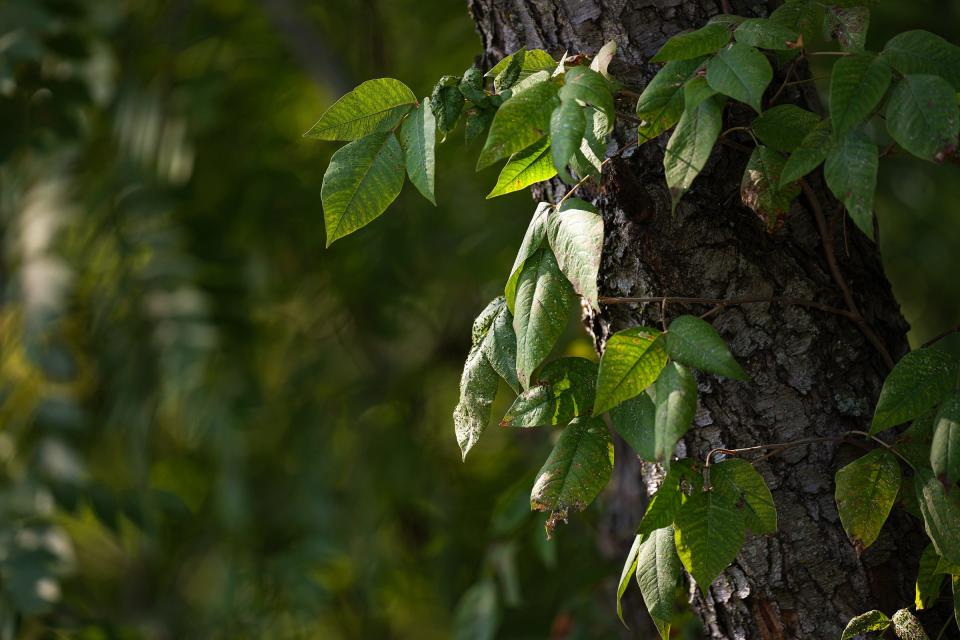What are the symptoms of poison ivy exposure and how can you identify it in your yard

Spring officially arrived on March 20, but for many gardeners and outdoor enthusiasts, the real start of spring occurs the first time the telltale itching, skin rash and blistering appear after exposure to poison ivy. Seedlings of poison ivy (Toxicodendron radicans) can appear anywhere in the garden or landscape, thanks to birds who widely disperse the seeds after they eat the fruit, putting the resulting seedlings within easy reach of many an ungloved gardener. Many times, gardeners are unaware of the presence of poison ivy in their landscape until after they unwittingly come in contact with the plant while weeding or completing other tasks in the landscape.
More plants to weed out: Deadly poison hemlock spreading. Experts say act now to attack it
Identifying the culprit
Poison ivy can grow as a self-supporting erect woody shrub, but its usual growth habit is as a slender vine running along the ground or growing on trees, shrubs and even rock walls and other landscape features. This native creeping vine uses small aerial rootlets to firmly attach itself to other plants or structures.
Poison ivy can be identified by the presence of three leaflets arranged alternately on the plant stem, never in an opposite arrangement. The old adage for identifying poison ivy warns, “Leaves of three, let it be!” The leaves may appear shiny or dull and often are pointed at the tips. The edges of each leaflet may be smooth or have a few coarse notches but are not serrated. In the summer, leaves and berries are green. In the fall, the berries turn white and the leaves red.
Poison ivy is often mistaken for Virginia creeper (Parthenocissus quinquefolia), another vining woody plant which is also spread widely by birds. Virginia creeper, however, is not poisonous and can be a desirable plant to grow on a wall or trellis. Like poison ivy, its foliage turns a stunning shade of deep crimson in autumn. Virginia creeper can be identified by its five leaflets connected to a single point on the plant stem.
We routinely get questions about cousins of poison ivy such as poison oak and poison sumac, but neither of these other poisonous plants are common in Ohio; poison oak only grows in southern and western states in the United States, and poison sumac only grows in extremely wet environments such as swamps and bogs.
Source of irritation
All parts of poison ivy contain an oily compound called urushiol. When urushiol comes in contact with the skin, or is inhaled, it causes skin inflammation, itching and blistering. You do not even have to contact the plant directly, as urushiol oil can get on tools, pets or clothing, and when you come in contact with these items, the poisonous oil is easily transferred to your skin. It can also be inhaled in gas form when poison ivy is burned. Urushiol can even persist in dead poison ivy plants and leaves for more than a year, making spring cleanup around these plants dangerous.
More from Mike Hogan: Vegetable gardeners, beware of working in wet soil

Control options
The safest and most effective method for removing poison ivy from the landscape is through the application of a herbicide such as glyphosate, 2,4-D or tripclopyr. Young poison ivy plants should be treated with an herbicide in the spring, when the plants are small. Herbicides should be applied on warm, sunny days when there is little wind and rain is not forecast. Another effective time to control poison ivy will come in late August, when cooler nights trigger the vines to start storing energy for next year’s growth.
When using any pesticide, always follow all label directions, paying close attention to personal safety and potential environmental effects. When applying a contact herbicide such as glyphosate, remember that these herbicides will kill or damage non-target plants if the spray material comes into contact with them.
It is possible to control small poison ivy plants by digging up the roots of the plant when the soil is moist, but extreme care should be taken to cover all bare skin and wash tools and clothing with soapy water after use. Never use a string trimmer to remove poison ivy plants, as the urushiol oil is easily spread by the rapid spinning motion of such trimmers. Never burn live or dead poison ivy plants, as soot particles carry urushiol oil into the air and can result in severe poisoning of individuals who are exposed to the smoke.

Symptoms of exposure
Symptoms of exposure to poison ivy usually appear within 12-24 hours of exposure but can also appear in as little as three or four hours or can be delayed for several days. The time span is dependent upon an individual’s sensitivity, the amount of urushiol oil that contacted the skin, and the season. Spring and summer are the times of greatest potential for poisoning by this plant.
Symptoms include itching, skin inflammation, swelling and the formation of blisters. For severe cases of poison ivy exposure, a doctor may prescribe cortisone skin cream or other medication to help reduce swelling and itching.
Mike Hogan is an Extension educator, Agriculture and Natural Resources, and associate professor with Ohio State University Extension. hogan.1@osu.edu
This article originally appeared on Cincinnati Enquirer: How to identify and safely get rid of poison ivy in your yard


